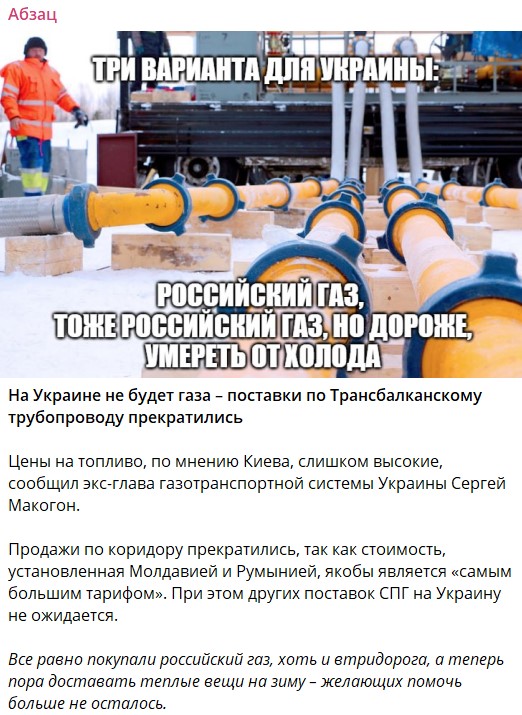Verification within Meta’s Third-Party Fact-Checking Program
Information is being spread online claiming that during the 2025–2026 heating season, Ukraine will be left without gas because supplies through the Trans-Balkan Gas Pipeline have stopped. The authors assert that there will be no supplies of liquefied natural gas (LNG) from other countries.
However, this is false. The Trans-Balkan Gas Pipeline is only one of the routes for gas imports to Ukraine; LNG is also supplied by Poland, Slovakia, and Hungary. 
Screenshot of the post
The Trans-Balkan Corridor is a gas pipeline that runs through Turkey, Greece, Bulgaria, Romania, and Moldova to Ukraine. Previously, it was actively used to supply Russian gas to the Balkans; however, in recent years, it has hardly been operational. In 2020, Russia redirected most of the gas volumes via an alternative route through Turkey. In 2025, Ukraine began using this corridor to import natural gas from Azerbaijan through Bulgaria and Romania. Through this route, Ukraine planned to import gas from Greece.
According to Serhii Makohon, the former head of the Gas Transmission System Operator of Ukraine, in September 2025, no company booked transportation capacities for gas supplies from Greece to Ukraine through the Trans-Balkan Corridor. In other words, no company agreed to transport gas to Ukraine via this route.
Makohon added that this might be due to high competition from other routes, unfavorable conditions, or expectations surrounding the launch of a new route that will connect the terminal in Alexandroupolis (Greece) with Ukraine via Bulgaria, Romania, and Moldova.
At the same time, analysts noted at the very beginning of the corridor’s launch that this route could not be cheap, since its use requires tariff coordination with many participating countries, which significantly increases the final transportation cost. The corridor was considered more as a backup direction to ensure the possibility of receiving liquefied gas from Greece or supplying Moldova in the future, rather than as a primary source of imports.
The Trans-Balkan Gas Pipeline is far from the only available option. According to the latest available data, from January to July 2025, Ukraine imported natural gas from the following countries: Hungary — 1.47 billion cubic meters (50% of the total volume), Poland — 760 million cubic meters (25.95%), and Slovakia — 698 million cubic meters (23.85%). Meanwhile, the Trans-Balkan route accounted for only 5 million cubic meters (0.2%).
In August–early September 2025, Poland, Slovakia, and Hungary did not report any intention to halt supplies. Therefore, Ukraine still has other routes for gas imports. Moreover, in July 2025, Ukraine and Poland extended the temporary increase in gas import capacity from Poland to Ukraine from August 1, 2025, until September 2026. This was done because Russia repeatedly attacked Ukraine’s gas infrastructure during the year. On April 29, 2025, former Prime Minister of Ukraine Denys Shmyhal reported that Ukraine’s gas production infrastructure had lost nearly 50% of its total production.
Attention
The authors do not work for, consult to, own shares in or receive funding from any company or organization that would benefit from this article, and have no relevant affiliations



